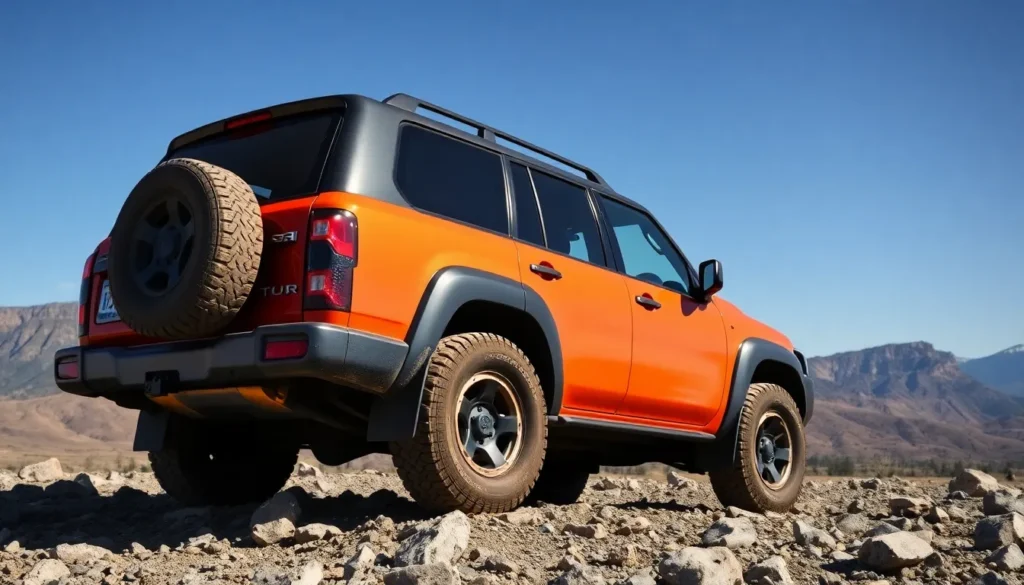We’ve all dreamed of conquering untamed terrain with confidence and style. The Nissan Patrol Y61 transforms that dream into reality with its legendary off-road prowess that’s earned respect from adventurers worldwide. This rugged SUV isn’t just another vehicle – it’s your ticket to exploring places others can’t reach.
Built between 1997 and 2016, the Y61 represents Nissan’s commitment to creating the ultimate off-road machine. We’re talking about a vehicle that combines raw power with surprising comfort whether you’re handling desert dunes or city streets. Its robust construction and proven reliability have made it a favorite among serious off-road enthusiasts and families alike.
What sets the Patrol Y61 apart from competitors? We’ll explore everything from its impressive towing capacity to its advanced four-wheel-drive system that handles the toughest conditions. If you’re considering joining the Y61 community or simply curious about this off-road legend we’re here to give you the complete picture.
Nissan Patrol Y61 Overview and History
The Nissan Patrol Y61 represents a milestone achievement in off-road vehicle engineering that transformed the SUV industry from 1997 to 2016. Production spanned nearly two decades across multiple global markets including Australia, the Middle East, and various European countries. This fifth-generation Patrol established new benchmarks for durability and capability in the full-size SUV segment.
Nissan introduced the Y61 platform to replace the Y60 series with enhanced structural rigidity and improved comfort features. Engineers designed the chassis using a ladder-frame construction that provides exceptional strength for heavy-duty applications. The vehicle’s dimensions measure 4,970mm in length, 1,940mm in width, and 1,950mm in height, creating substantial interior space while maintaining manageable road presence.
| Generation | Production Years | Key Markets | Chassis Type |
|---|---|---|---|
| Y61 Series 1 | 1997-2001 | Australia, Middle East | Ladder Frame |
| Y61 Series 2 | 2001-2004 | Global Markets | Reinforced Ladder Frame |
| Y61 Series 3 | 2004-2010 | Europe, Asia Pacific | Updated Ladder Frame |
| Y61 Series 4 | 2010-2016 | Limited Markets | Final Iteration |
Development focused on creating a vehicle that could handle extreme conditions while providing passenger comfort for long-distance travel. The Y61’s engineering team prioritized ground clearance, approach angles, and departure angles to maximize off-road performance. Standard features included a part-time four-wheel-drive system with manual locking hubs on early models.
Manufacturing took place primarily at Nissan’s facilities in Japan and Spain depending on the target market. The Spanish facility in Barcelona handled European distribution while Japanese production served Asia-Pacific regions. Each manufacturing location adapted specifications to meet local safety regulations and customer preferences.
Historical significance of the Y61 extends beyond its commercial success to include its role in establishing Nissan’s reputation in the premium SUV market. Military and commercial operators adopted the platform for its reliability in harsh environments. The vehicle’s proven track record in desert conditions, mountainous terrain, and extreme weather situations solidified its legendary status among off-road enthusiasts.
Engine Performance and Specifications
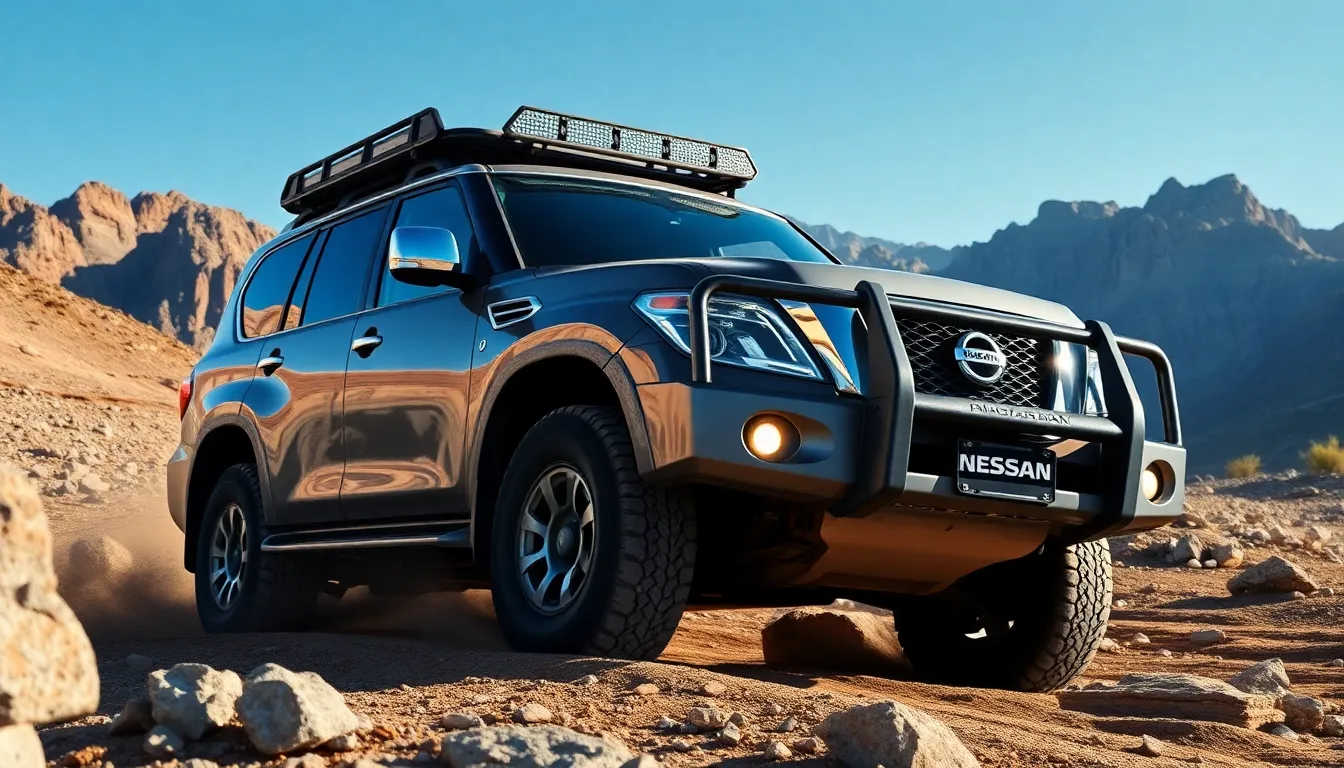
Engine performance defines the Nissan Patrol Y61’s legendary capability across diverse terrains and demanding applications. Multiple powerplant options delivered the robust performance that made this SUV a favorite among off-road enthusiasts and commercial users worldwide.
Petrol Engine Options
We find the TB48E 4.8-liter inline-six engine as the flagship petrol powerplant in the Y61 lineup. This naturally aspirated engine produces 245 horsepower at 4,800 rpm and 389 Nm of torque at 3,600 rpm. Electronic fuel injection systems optimize fuel delivery while maintaining reliability in extreme conditions.
Regional markets received the TB45E 4.5-liter inline-six engine as an alternative petrol option. Power output reaches 202 horsepower with 353 Nm of torque across a broad rpm range. Both engines feature cast iron construction and overhead valve designs that prioritize durability over complexity.
Australian markets offered the TB48DE variant with enhanced emissions control systems. Performance characteristics remain similar to the TB48E while meeting stricter environmental regulations. These petrol engines excel in high-altitude conditions where naturally aspirated designs maintain consistent power delivery.
Diesel Engine Variants
Diesel variants dominated global Y61 sales with the ZD30DDTi 3.0-liter turbocharged inline-four engine leading the lineup. This powerplant generates 158 horsepower and 354 Nm of torque with direct injection technology. Intercooling systems enhance efficiency while variable geometry turbochargers improve response across the rpm range.
European markets received the RD28ETi 2.8-liter turbocharged inline-six diesel engine. Power output reaches 129 horsepower with 304 Nm of torque optimized for commercial applications. Common rail injection systems deliver precise fuel metering while reducing emissions levels.
Middle Eastern specifications featured the TD42 4.2-liter naturally aspirated inline-six diesel engine. This robust powerplant produces 145 horsepower and 328 Nm of torque with proven reliability in harsh desert conditions. Mechanical injection systems minimize electronic complexity while maximizing service life in extreme environments.
Transmission Systems
Manual transmission options include the 5-speed FS5W71C gearbox paired with most engine variants. Gear ratios optimize low-end torque multiplication for off-road applications while maintaining highway cruising efficiency. Heavy-duty construction withstands the demands of loaded trailer towing and rock crawling scenarios.
Automatic transmission variants feature the 4-speed RE4R01A unit with lockup torque converter technology. Electronic controls adapt shift patterns based on driving conditions and throttle inputs. This transmission integrates seamlessly with the transfer case for smooth four-wheel drive engagement.
Transfer case systems use the RF1A unit with high and low range ratios. Low range provides a 2.48:1 reduction ratio that multiplies engine torque for extreme off-road conditions. Part-time four-wheel drive operation allows drivers to select rear-wheel drive for on-road efficiency or four-wheel drive for enhanced traction when conditions demand maximum capability.
Off-Road Capabilities and 4WD System
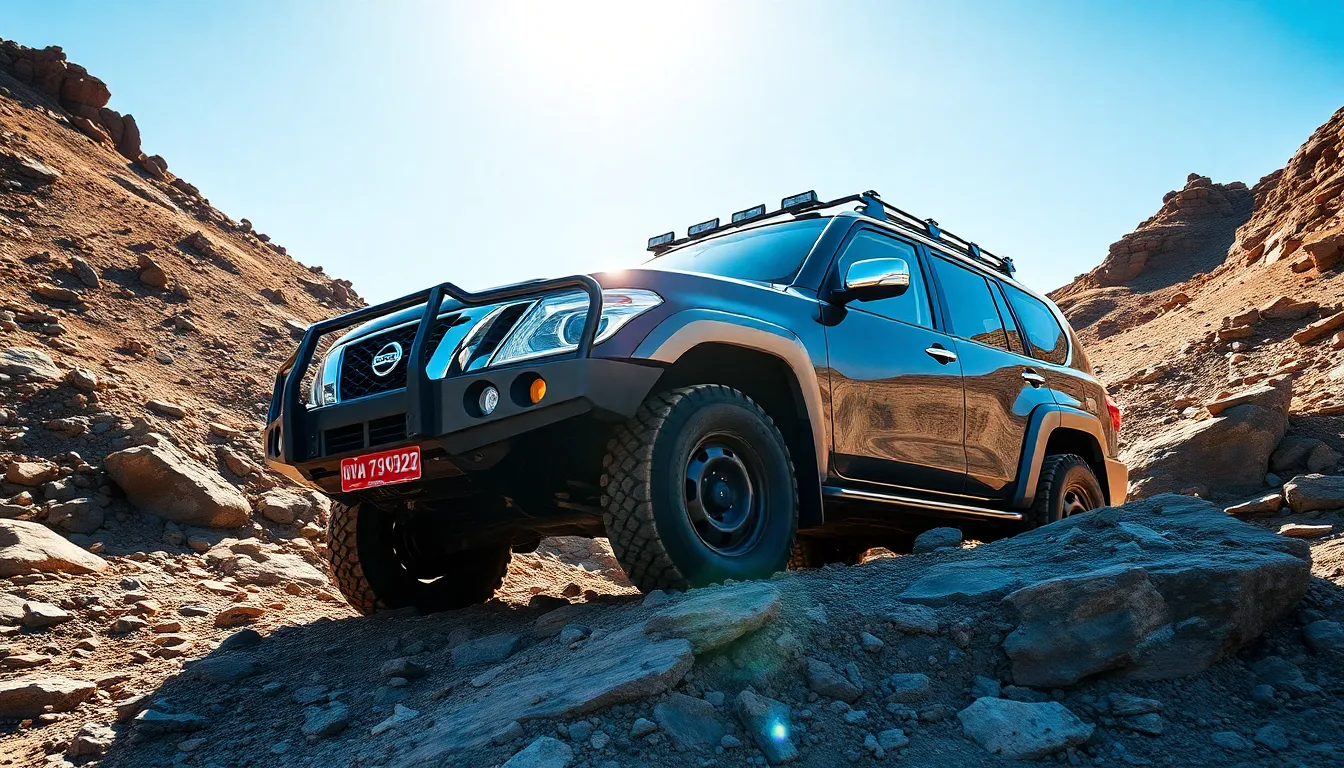
The Nissan Patrol Y61’s off-road prowess stems from its sophisticated four-wheel-drive architecture and mechanical systems designed for extreme terrain challenges. Advanced engineering answers enable this SUV to tackle demanding environments while maintaining stability and control across diverse surface conditions.
Terrain Response and Traction
Mechanical differential locks provide maximum traction distribution when traversing challenging surfaces like sand, mud, and rocky terrain. The Y61’s part-time four-wheel-drive system allows drivers to engage 4H (high range) for improved grip on loose surfaces at speeds up to 100 km/h. Low-range gearing in 4L mode delivers a 2.48:1 reduction ratio, enabling precise control during steep ascents and technical rock crawling scenarios.
Electronic traction control systems work along with the mechanical differentials to prevent wheel spin on uneven surfaces. Front and rear differential locks can be manually activated through dashboard switches, ensuring power delivery to wheels with the most grip. The system’s effectiveness becomes particularly evident when handling loose sand dunes or muddy forest tracks where individual wheel traction varies significantly.
| Terrain Type | Recommended Mode | Differential Settings |
|---|---|---|
| Sand dunes | 4H or 4L | Rear lock engaged |
| Rocky terrain | 4L | Both locks as needed |
| Mud/swamp | 4L | Front and rear locks |
| Snow/ice | 4H | Electronic traction control |
Ground Clearance and Approach Angles
Ground clearance measurements reach 235mm in standard configuration, providing adequate protection for the vehicle’s undercarriage components during off-road excursions. Approach angles of 36 degrees allow the Y61 to climb steep obstacles without front bumper contact, while the 27-degree departure angle prevents rear-end scraping when cresting hills or handling steep descents.
Breakover angle specifications of 25 degrees enable the vehicle to traverse ridge lines and rocky outcrops without bellying out on the center differential housing. These geometric advantages become crucial when handling technical terrain where precise positioning determines success or failure. Side slope capabilities extend to 35 degrees, allowing confident traversal of cambered surfaces and hillside tracks.
Wading depth reaches 700mm, enabling river crossings and flood zone navigation with proper preparation and sealed electrical connections. The elevated air intake position and waterproofed components protect critical systems during water crossings. Frame-mounted recovery points provide secure attachment points for winching operations or assisted extraction from difficult situations.
Interior Design and Comfort Features
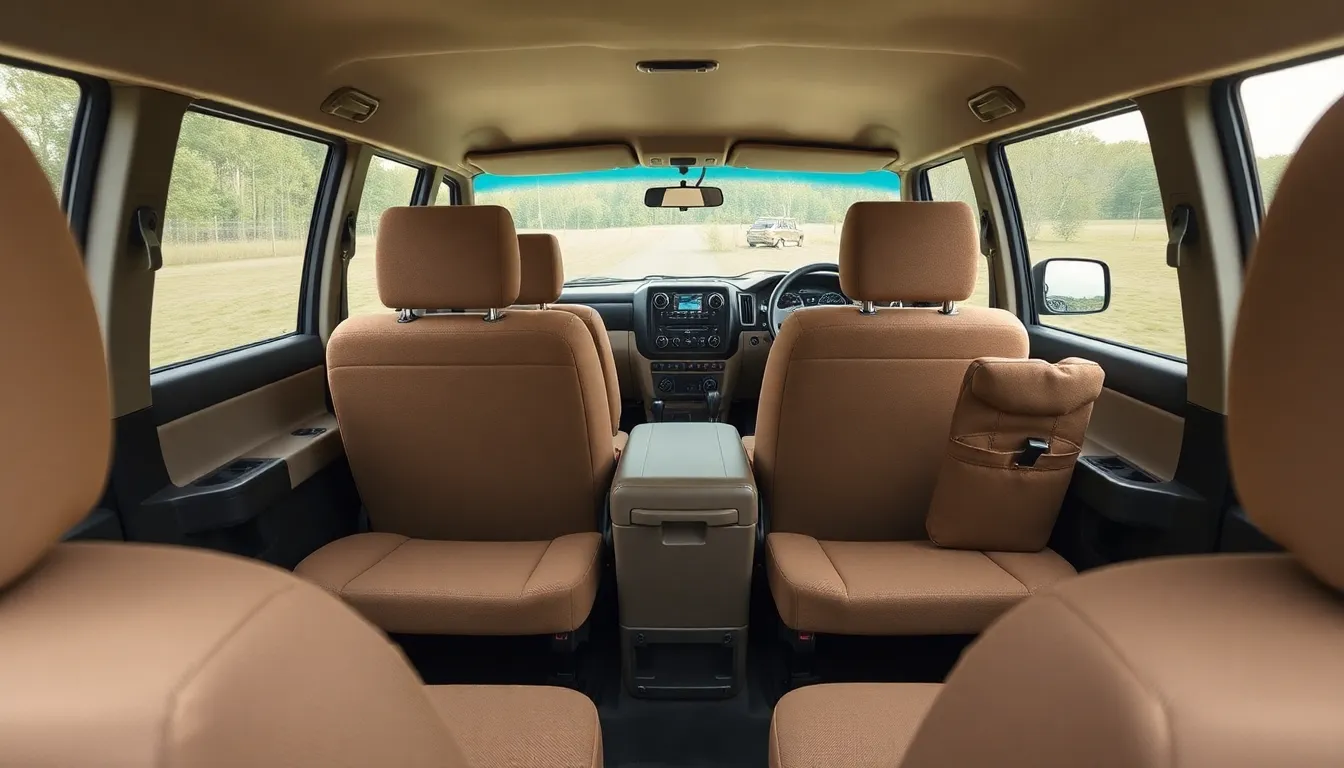
The Nissan Patrol Y61 interior balances rugged functionality with comfort features designed for long-distance travel and family use. We find that the cabin design prioritizes durability and practicality while maintaining the refinement expected from a premium SUV.
Seating Configuration and Space
Seating arrangements in the Y61 accommodate seven passengers across three rows in most configurations. Front bucket seats feature robust construction with manual adjustment controls and limited lumbar support options. Second-row seating provides a 60/40 split-folding bench that creates additional cargo space when folded flat.
Third-row access occurs through forward-folding second-row seats, though entry remains challenging for adults due to the narrow opening. Headroom measures 1,020mm in the front and 980mm in the second row, providing adequate space for occupants up to 6 feet tall. Legroom spans 1,070mm for front passengers and 890mm for second-row occupants.
Cargo capacity reaches 490 liters with all seats upright and expands to 2,015 liters when rear seats fold down. Interior width of 1,795mm ensures comfortable shoulder room for three adults in the second row. Seat materials include durable cloth upholstery in base trims and leather-appointed surfaces in higher specifications.
Dashboard and Technology
Dashboard layout emphasizes simplicity and accessibility with large, clearly marked controls positioned within easy reach of the driver. Center console houses climate control knobs, audio system controls, and transfer case selector switch in logical groupings. Instrument cluster features analog gauges including speedometer, tachometer, fuel gauge, and temperature gauge with clear white backlighting.
Technology features remain basic compared to modern standards, reflecting the Y61’s design era from 1997 to 2016. Audio systems include AM/FM radio with cassette or CD player depending on model year and trim level. Air conditioning operates through manual controls with separate zones for front and rear passengers in higher trim levels.
Storage compartments include a large glove box, center console bin, door pockets, and overhead console for sunglasses and small items. Cup holders accommodate standard beverage containers and position conveniently for front and second-row passengers. Dashboard construction uses hard plastics throughout, prioritizing durability over premium tactile feel.
Switch gear includes window controls, mirror adjustments, and headlight controls grouped on the driver’s door panel. Steering wheel incorporates basic audio controls on select models, while cruise control buttons appear on higher trim specifications. Interior lighting consists of dome lights, map lights, and cargo area illumination for nighttime visibility.
Build Quality and Reliability
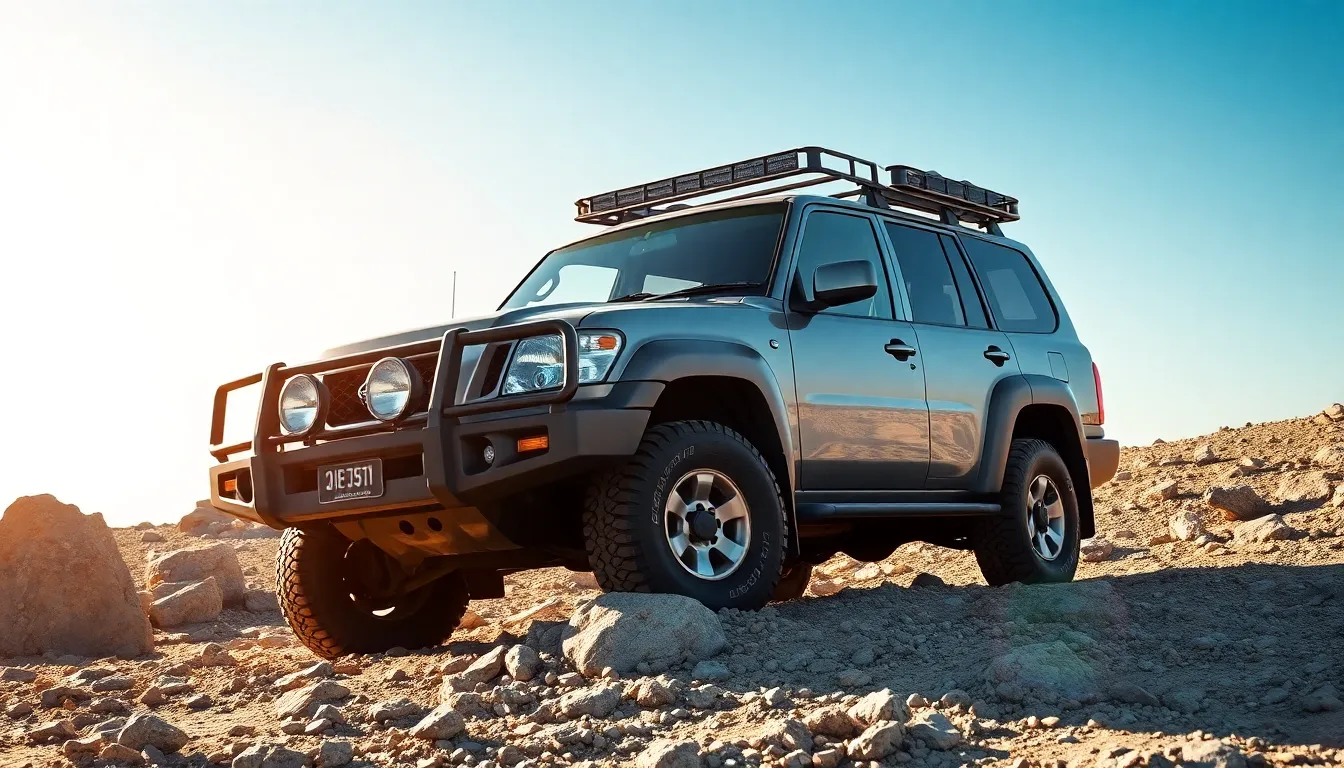
Build quality represents one of the Nissan Patrol Y61’s most compelling attributes, with construction standards that withstand decades of demanding use. We observe exceptional durability in the ladder frame chassis, which uses high-tensile steel throughout its structure to resist flexing under extreme loads. Manufacturing precision at Nissan’s facilities in Yokohama and Barcelona ensures consistent quality control across all production batches from 1997 to 2016.
Structural integrity benefits from reinforced mounting points at critical stress areas, including suspension attachment locations and engine bay supports. Corrosion resistance emerges through galvanized steel panels and protective coatings applied to the undercarriage components. Body panel thickness measures 0.8mm on average, providing substantial protection against impact damage while maintaining reasonable weight distribution.
Reliability statistics demonstrate the Y61’s exceptional longevity, with many examples exceeding 300,000 kilometers without major mechanical failures. Engine durability stands out particularly in the TB48E petrol unit, which commonly reaches 500,000 kilometers with proper maintenance intervals. Transmission reliability matches engine performance, with both manual and automatic variants maintaining functionality well beyond typical SUV lifespans.
Component longevity extends to suspension systems, where leaf springs and coil spring assemblies retain their performance characteristics after years of off-road abuse. Electronic systems remain minimal by design, reducing potential failure points compared to modern vehicles with complex computer networks. Power steering pumps, alternators, and air conditioning compressors demonstrate consistent operation across various climate conditions.
Maintenance intervals reflect the Y61’s robust engineering, with oil changes required every 10,000 kilometers and major service points occurring at 40,000-kilometer intervals. Parts availability remains excellent globally, with genuine Nissan components and aftermarket alternatives readily accessible through dealer networks and specialty suppliers. Service costs stay reasonable due to the vehicle’s mechanical simplicity and widespread technical knowledge among automotive professionals.
Quality control measures during production included rigorous testing protocols for each vehicle, with particular attention to drivetrain integration and body seal effectiveness. Manufacturing tolerances maintain tight specifications for critical components like differential housings and transfer case assemblies. Paint quality varies between production years, with later models showing improved finish durability and color retention characteristics.
Fuel Economy and Running Costs
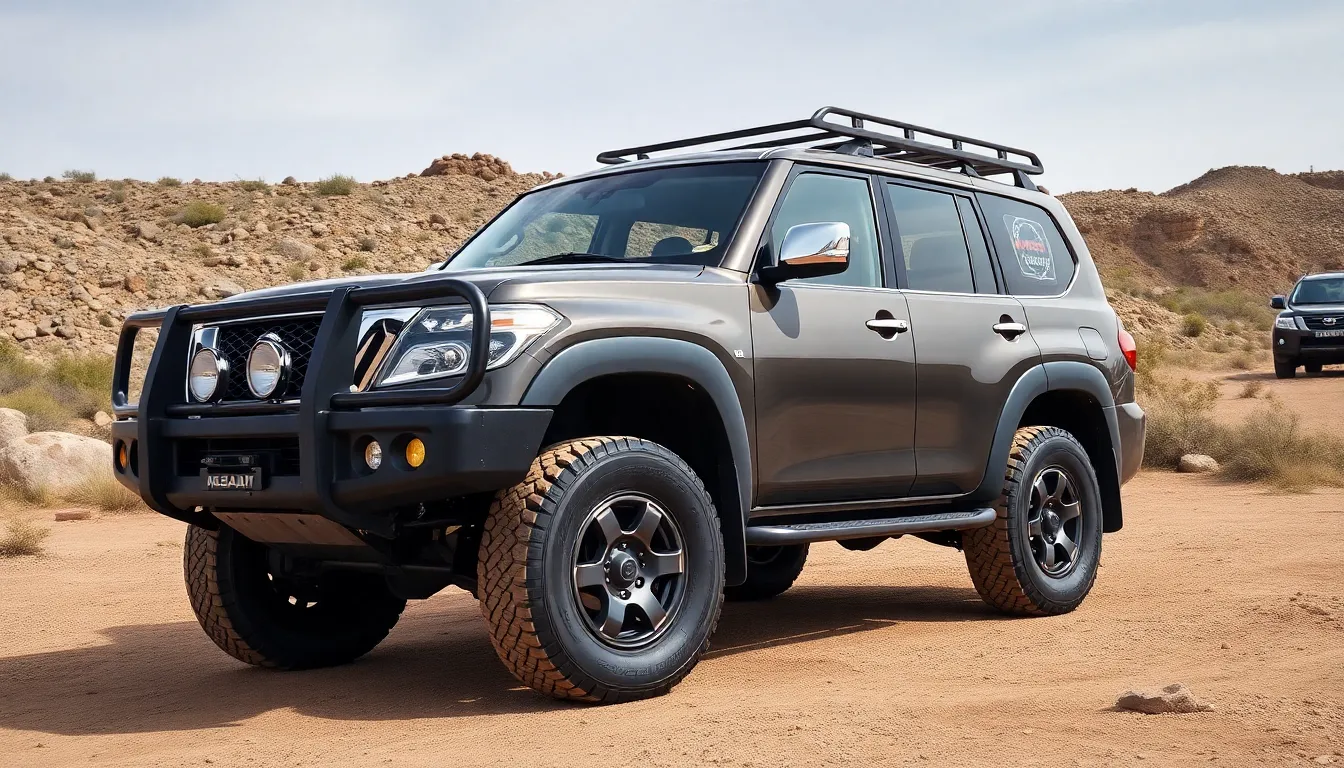
The Nissan Patrol Y61’s fuel consumption varies significantly across its engine lineup, with diesel variants offering the most economical operation. Our analysis reveals the ZD30DDTi 3.0-liter turbodiesel achieves approximately 10.5-12.0 liters per 100 kilometers in combined driving conditions, while the TB48E 4.8-liter petrol engine consumes 14.5-16.8 liters per 100 kilometers under similar circumstances.
Urban driving conditions increase fuel consumption notably for all Y61 powerplants. The diesel variants typically require 12-14 liters per 100 kilometers in city traffic, whereas petrol engines can consume 18-22 liters per 100 kilometers during stop-and-go driving scenarios.
Highway cruising presents the most efficient operating conditions for the Patrol Y61. Diesel models achieve 8.5-10.0 liters per 100 kilometers at steady highway speeds, while petrol variants consume 12.5-14.0 liters per 100 kilometers on open roads.
| Engine Variant | Urban (L/100km) | Highway (L/100km) | Combined (L/100km) |
|---|---|---|---|
| ZD30DDTi 3.0L Diesel | 12.0-14.0 | 8.5-10.0 | 10.5-12.0 |
| TB48E 4.8L Petrol | 18.0-22.0 | 12.5-14.0 | 14.5-16.8 |
| TB45E 4.5L Petrol | 16.0-20.0 | 11.0-13.0 | 13.5-15.5 |
Running costs for the Y61 remain moderate due to its mechanical simplicity and excellent parts availability. Routine maintenance intervals occur every 10,000 kilometers for diesel variants and 5,000 kilometers for petrol models. Basic service costs range from $250-350 for oil changes and inspections, while major services including filters and spark plugs cost $450-650.
Tire replacement represents a important ongoing expense given the Y61’s heavy weight and off-road usage patterns. Quality all-terrain tires cost $200-300 per tire, with replacement intervals ranging from 40,000-60,000 kilometers depending on driving conditions and tire quality.
Insurance costs vary considerably based on the vehicle’s age, usage patterns, and location. Comprehensive coverage typically ranges from $1,200-2,000 annually for older Y61 models, with higher premiums for vehicles used primarily for off-road activities or commercial applications.
Diesel variants offer superior long-term value propositions even though higher initial purchase prices in some markets. The improved fuel economy and longer service intervals offset the additional upfront investment within 80,000-100,000 kilometers of ownership.
Depreciation rates for well-maintained Y61 models remain relatively stable compared to contemporary SUVs. Examples with documented maintenance history and minimal modifications retain 60-70% of their original value after 10 years, reflecting the model’s reputation for durability and capability.
Parts availability contributes significantly to reasonable ownership costs throughout the Y61’s lifecycle. Common wear items like brake pads, filters, and belts remain readily available at competitive prices, while major components benefit from Nissan’s extensive global service network.
Common Issues and Maintenance
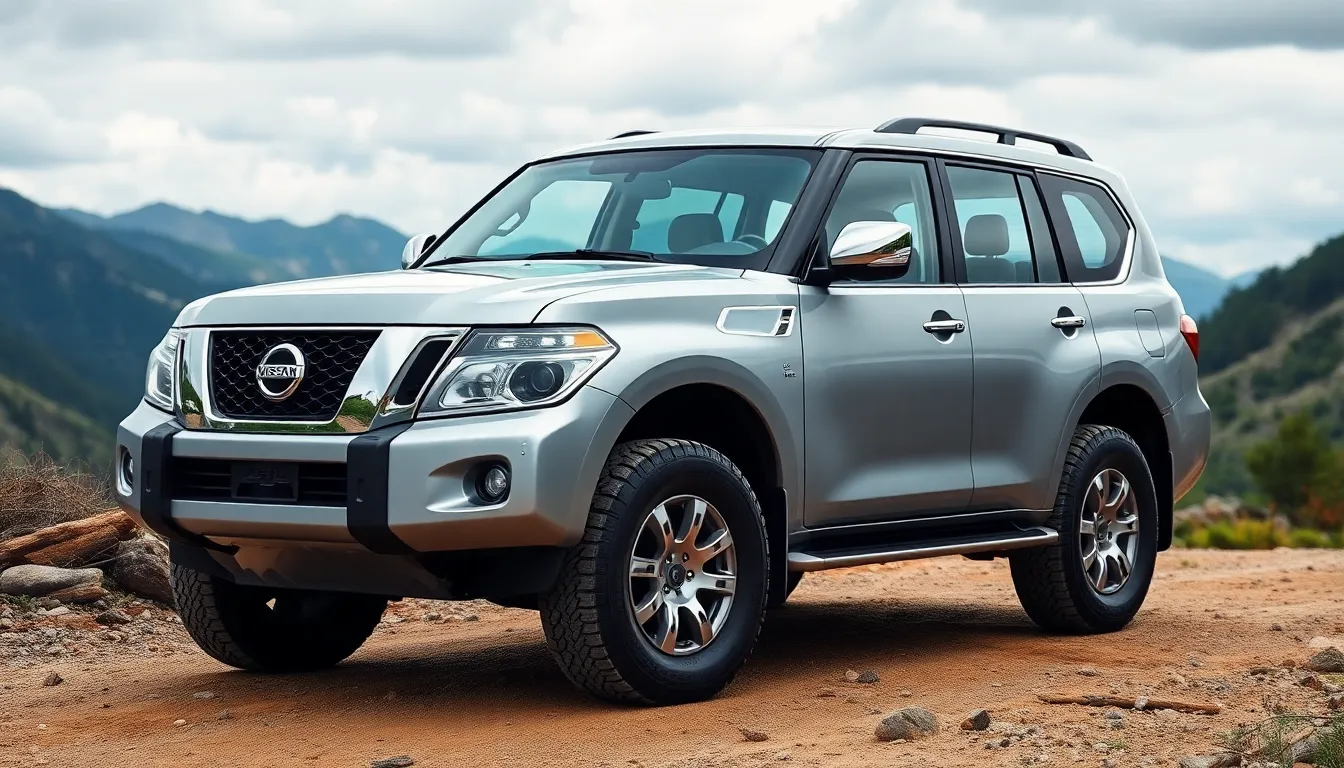
The Y61’s legendary reliability comes with exact problem areas that owners frequently encounter. Understanding these issues helps maintain optimal performance throughout the vehicle’s service life.
Known Problem Areas
Engine Cooling System Problems
- ZD30DDTi engines suffer from cracked cylinder heads between 150,000-200,000 kilometers due to inadequate cooling design
- TB48E models develop radiator leaks at the plastic tank connections after 8-10 years
- Thermostat housing failures occur on petrol variants around 120,000 kilometers
- Water pump bearing wear creates coolant leaks on high-mileage examples
Transmission and Drivetrain Issues
- RE4R03A automatic transmissions experience valve body failures after 180,000 kilometers
- Transfer case chain stretch affects models with heavy towing histories
- Rear differential pinion seal leaks appear on vehicles exceeding 200,000 kilometers
- Manual transmission syncromesh wear occurs in second and third gears around 250,000 kilometers
Suspension and Steering Concerns
- Front upper control arm bushings deteriorate every 80,000-100,000 kilometers
- Steering rack seals leak on models operated in dusty conditions
- Rear leaf spring bushings require replacement at 150,000 kilometer intervals
- Power steering pump failures affect TB48E models after 200,000 kilometers
Electrical System Faults
- Alternator brushes wear prematurely on diesel variants due to extended idling
- Door lock actuators fail on passenger doors between 100,000-150,000 kilometers
- Dashboard warning lights malfunction due to corroded connections
- Air conditioning compressor clutches slip after 8 years in hot climates
Service Requirements
Regular Maintenance Intervals
- Engine oil changes occur every 5,000 kilometers for diesel engines and 10,000 kilometers for petrol variants
- Transmission fluid replacement happens at 40,000 kilometer intervals for automatic models
- Transfer case oil requires changing every 60,000 kilometers regardless of usage patterns
- Differential oil changes take place at 80,000 kilometer intervals
Critical Service Points
- Timing belt replacement on ZD30DDTi engines at 100,000 kilometers prevents catastrophic damage
- Brake fluid flushing every 24 months maintains optimal braking performance
- Fuel filter changes at 20,000 kilometer intervals keep diesel injection systems clean
- Air filter replacement every 15,000 kilometers protects engine internals from dust ingestion
Preventive Maintenance Tasks
- Coolant system flushing every 60,000 kilometers prevents corrosion buildup
- Spark plug replacement on petrol engines occurs at 60,000 kilometer intervals
- Drive belt inspection happens during each service to prevent unexpected failures
- Suspension component lubrication extends component life in harsh operating conditions
- Diesel particulate filter cleaning becomes necessary after 80,000 kilometers on European models
- Four-wheel-drive system engagement testing prevents component seizure
- Undercarriage pressure washing removes salt and debris accumulation
- Torque converter service on automatic transmissions maintains smooth operation beyond 150,000 kilometers
Market Value and Buying Guide
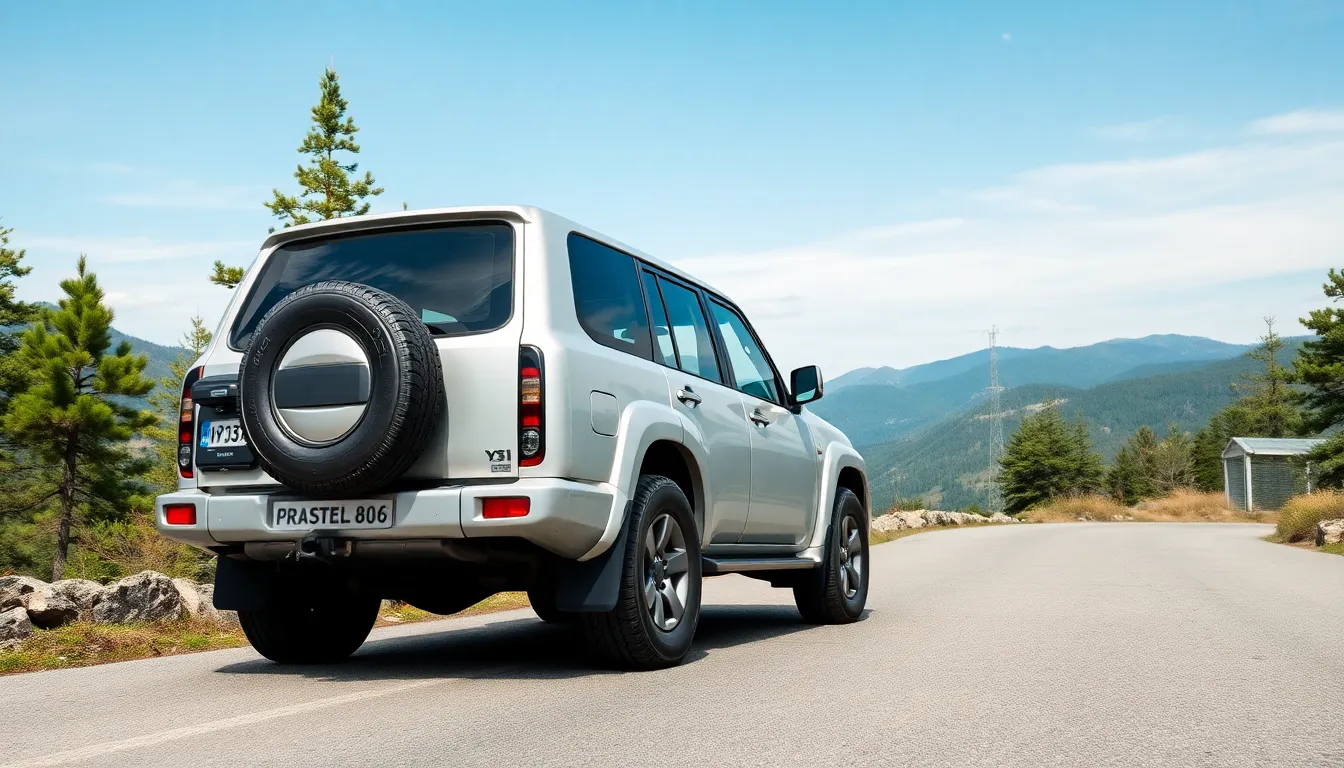
Market values for the Nissan Patrol Y61 vary significantly based on model year, engine configuration, and overall condition. Current pricing ranges from $8,000 for higher-mileage examples exceeding 250,000 kilometers to $35,000 for pristine low-mileage specimens with complete service histories.
| Model Variant | Price Range (USD) | Mileage Range | Condition |
|---|---|---|---|
| ZD30DDTi Diesel | $12,000-$28,000 | 150,000-300,000 km | Good to Excellent |
| TB48E Petrol | $10,000-$32,000 | 120,000-280,000 km | Good to Excellent |
| TB45E Petrol | $8,000-$22,000 | 200,000-350,000 km | Fair to Good |
| Series 1-2 Models | $8,000-$18,000 | 250,000-400,000 km | Variable |
| Series 3-5 Models | $15,000-$35,000 | 100,000-200,000 km | Good to Excellent |
Engine Selection Priorities
ZD30DDTi turbodiesel models command premium pricing due to superior fuel economy achieving 10.5-12.0 liters per 100 kilometers compared to petrol variants. TB48E 4.8-liter petrol engines offer exceptional longevity potential reaching 500,000 kilometers with proper maintenance but consume 14.5-16.8 liters per 100 kilometers. TB45E engines provide adequate power for most applications while maintaining lower purchase costs for budget-conscious buyers.
Model Year Considerations
Series 3 and later models from 2001 onwards incorporate improved structural rigidity and enhanced comfort features. Series 5 examples built after 2007 represent the most refined Y61 variants with updated interior appointments and reliability improvements. Earlier Series 1-2 models offer greater affordability but may require additional maintenance investment over time.
Inspection Checklist for Buyers
Engine cooling systems require thorough inspection for radiator leaks, thermostat operation, and water pump condition. Transmission operation should demonstrate smooth shifting in manual variants and proper engagement in automatic models without slipping or harsh changes. Transfer case functionality must include proper engagement of four-wheel drive modes without grinding or binding. Suspension components including shock absorbers, leaf springs, and bushings need assessment for wear patterns and leakage.
Mileage and Service History Impact
Examples with documented service records and regular maintenance intervals retain significantly higher values regardless of odometer readings. Vehicles approaching 200,000 kilometers without major component replacements may require timing belt service, transmission rebuilds, or cooling system overhauls. Models exceeding 300,000 kilometers often demonstrate the Y61’s legendary durability when properly maintained throughout their lifespan.
Regional Market Variations
Australian market examples typically command higher prices due to strict import regulations and limited availability of diesel variants. Middle Eastern specifications often include additional cooling modifications and dust filtration systems suitable for harsh environments. European models feature different emission control systems that may affect long-term maintenance costs and parts availability.
Negotiation Strategies
Recent service receipts and maintenance records provide leverage for price negotiations when documentation proves proper care. Known issues like cooling system repairs or transmission services completed recently can justify higher asking prices. Aftermarket modifications including suspension lifts, auxiliary lighting, or protection equipment may increase or decrease values depending on quality and buyer preferences.
Nissan Patrol Y61 vs Competitors
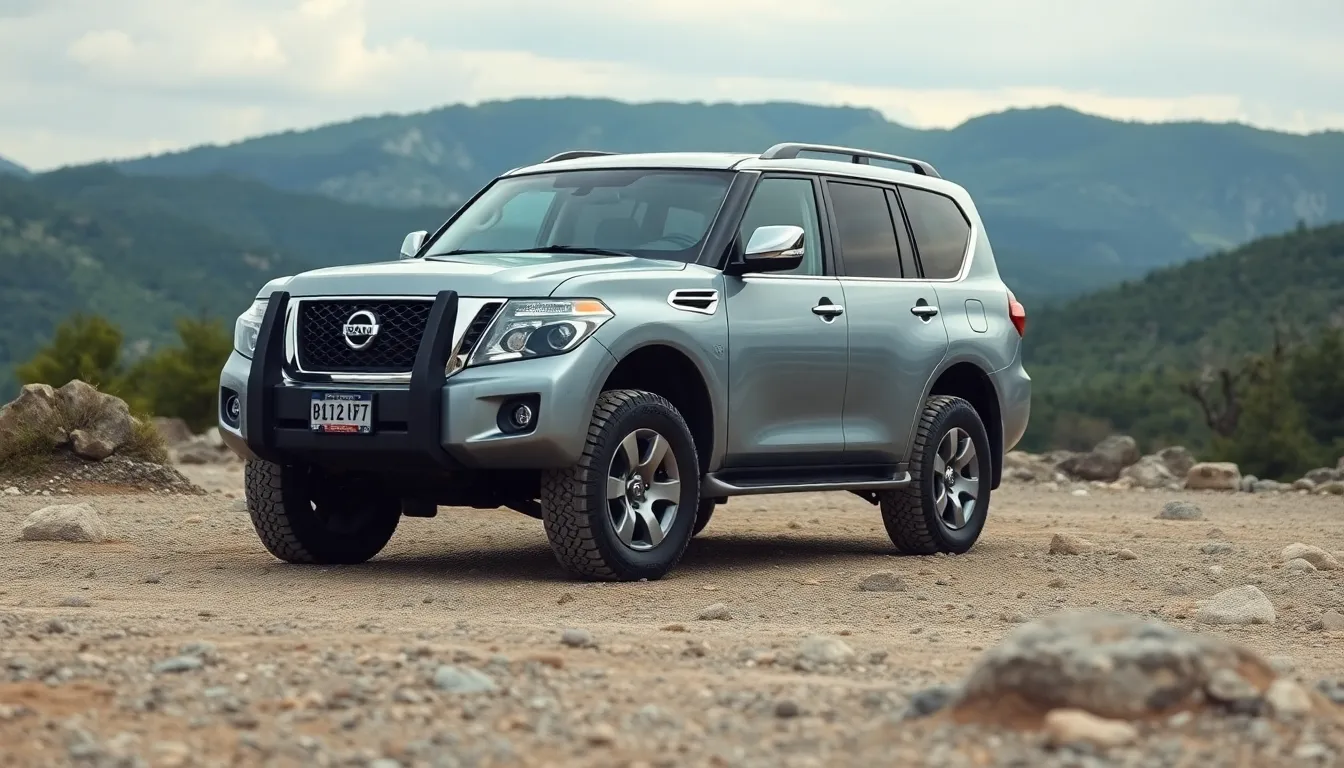
Our comparison of the Nissan Patrol Y61 against its primary competitors reveals distinct advantages in exact areas while highlighting where other vehicles excel. The Toyota Land Cruiser 100 Series stands as the Y61’s most direct rival, offering similar body-on-frame construction and off-road capability.
Performance and Engine Options
The Y61’s TB48E 4.8-liter inline-six producing 245 horsepower competes favorably against the Land Cruiser 100’s 4.7-liter V8 generating 235 horsepower. Toyota’s engine delivers superior torque output at 434 Nm compared to the Y61’s 389 Nm, providing better low-end pulling power for heavy towing applications.
Diesel variants showcase different strengths between these platforms. The Y61’s ZD30DDTi 3.0-liter turbodiesel achieves 158 horsepower while consuming 10.5-12.0 liters per 100 kilometers. Toyota’s 4.2-liter turbodiesel produces 204 horsepower but consumes 12.5-14.0 liters per 100 kilometers, making the Y61 more economical for long-distance touring.
| Vehicle | Engine | Power (HP) | Torque (Nm) | Fuel Economy (L/100km) |
|---|---|---|---|---|
| Y61 TB48E | 4.8L I6 | 245 | 389 | 14.5-16.8 |
| Y61 ZD30DDTi | 3.0L TD I4 | 158 | 354 | 10.5-12.0 |
| Land Cruiser 100 | 4.7L V8 | 235 | 434 | 13.8-15.5 |
| Land Cruiser 100 | 4.2L TD I6 | 204 | 430 | 12.5-14.0 |
Off-Road Capabilities
Ground clearance measurements favor the Y61 at 235mm compared to the Land Cruiser 100’s 225mm, providing additional protection when traversing rocky terrain. Both vehicles feature mechanical differential locks, though Toyota’s system includes a center differential lock that the Y61 lacks in base configurations.
Wading depth specifications show the Y61’s 700mm capability matching the Land Cruiser 100’s identical rating, ensuring both vehicles handle river crossings and flood conditions effectively. Approach angles differ slightly, with the Y61 achieving 36 degrees versus the Land Cruiser’s 34 degrees, while departure angles remain virtually identical at 27 degrees.
Interior Space and Comfort
Seating capacity gives both vehicles seven-passenger configurations, though the Land Cruiser 100 provides superior third-row access through its power-folding second-row seats. The Y61’s manual folding system requires more effort but proves more reliable over extended use periods.
Cargo capacity measurements show the Y61 offering 490 liters with all seats upright, while the Land Cruiser 100 provides 510 liters in the same configuration. Maximum cargo space reaches 2,015 liters for the Y61 compared to 2,050 liters for the Toyota when rear seats fold down.
Build Quality and Reliability
Long-term durability testing reveals both platforms achieving similar longevity, with many Y61 examples exceeding 300,000 kilometers without major mechanical failures. The Land Cruiser 100’s reputation for reliability matches this performance, though parts availability varies significantly between regions.
Maintenance costs favor the Y61 due to its mechanical simplicity and widespread service network availability. Toyota parts typically cost 15-20% more than equivalent Y61 components, though both vehicles maintain reasonable service intervals and predictable maintenance schedules.
Market Positioning
Purchase prices position the Y61 as the more affordable option, with comparable examples typically costing $3,000-$5,000 less than equivalent Land Cruiser 100 models. This price differential remains consistent across various market segments and vehicle conditions.
Resale values show the Land Cruiser 100 maintaining stronger depreciation resistance, retaining approximately 65% of original value after ten years compared to the Y61’s 55% retention rate. Market demand continues favoring Toyota’s brand recognition in many regions, though the Y61’s growing enthusiast following supports stable pricing in exact markets.
Conclusion
The Nissan Patrol Y61 stands as a testament to engineering excellence and practical design that’s served adventurous families and professionals for decades. We’ve seen how this remarkable SUV combines uncompromising off-road capability with everyday usability making it a compelling choice for those who demand both performance and reliability.
Whether you’re considering the fuel-efficient ZD30DDTi diesel or the powerful TB48E petrol engine the Y61 delivers consistent performance that’s backed by proven durability. Its mechanical simplicity and excellent parts availability ensure that ownership remains practical and cost-effective even years after production ended.
For buyers seeking a capable off-road vehicle that won’t expensive the Y61 represents exceptional value in today’s market. We believe this legendary SUV will continue earning respect from enthusiasts who understand that true capability comes from robust engineering rather than flashy features.
Frequently Asked Questions
What years was the Nissan Patrol Y61 produced?
The Nissan Patrol Y61 was manufactured between 1997 and 2016, spanning nearly two decades of production. This long production run demonstrates the model’s popularity and reliability across global markets including Australia, the Middle East, and Europe.
What engine options are available in the Y61?
The Y61 offers several engine options including the flagship TB48E 4.8-liter petrol inline-six producing 245 horsepower, the TB45E 4.5-liter petrol inline-six with 202 horsepower, and the popular ZD30DDTi 3.0-liter turbodiesel generating 158 horsepower.
How many passengers can the Patrol Y61 accommodate?
The Nissan Patrol Y61 can seat up to seven passengers across three rows. The configuration includes front bucket seats, a second-row bench seat that folds for cargo space, and a third row, though access to the rear seats can be challenging.
What is the fuel economy of the Y61?
Fuel consumption varies by engine type. The ZD30DDTi turbodiesel achieves approximately 10.5-12.0 liters per 100km in combined conditions, while the TB48E petrol engine consumes 14.5-16.8 liters per 100km. Urban driving increases consumption significantly.
What are the Y61’s off-road capabilities?
The Y61 features impressive off-road specifications including 235mm ground clearance, 700mm wading depth, part-time four-wheel-drive system, mechanical differential locks, and low-range gearing. These features enable navigation of challenging terrains like sand, mud, and rocky surfaces.
How reliable is the Nissan Patrol Y61?
The Y61 is exceptionally reliable, with many examples exceeding 300,000 kilometers without major mechanical failures. The TB48E petrol engine can reach 500,000 kilometers with proper maintenance, thanks to high-tensile steel construction and rigorous manufacturing standards.
What is the current market value of a Y61?
Y61 prices range from $8,000 for higher-mileage examples to $35,000 for pristine low-mileage specimens. Pricing depends on model year, engine configuration, condition, and service history. ZD30DDTi turbodiesel models command premium prices due to superior fuel economy.
What are common issues with the Y61?
Common problems include engine cooling system failures, transmission and drivetrain issues, suspension and steering concerns, and electrical system faults. Regular maintenance including oil changes, transmission fluid replacement, and timing belt services help prevent major issues.
How does the Y61 compare to the Toyota Land Cruiser 100 Series?
The Y61 offers superior ground clearance and more affordable pricing compared to the Land Cruiser 100 Series. While both accommodate seven passengers with comparable build quality, the Land Cruiser provides easier third-row access and stronger resale value.
What transmission options are available?
The Y61 comes with either a 5-speed manual or 4-speed automatic transmission, both designed to optimize performance for off-road and towing applications. The transfer case system allows switching between rear-wheel and four-wheel drive as needed.

